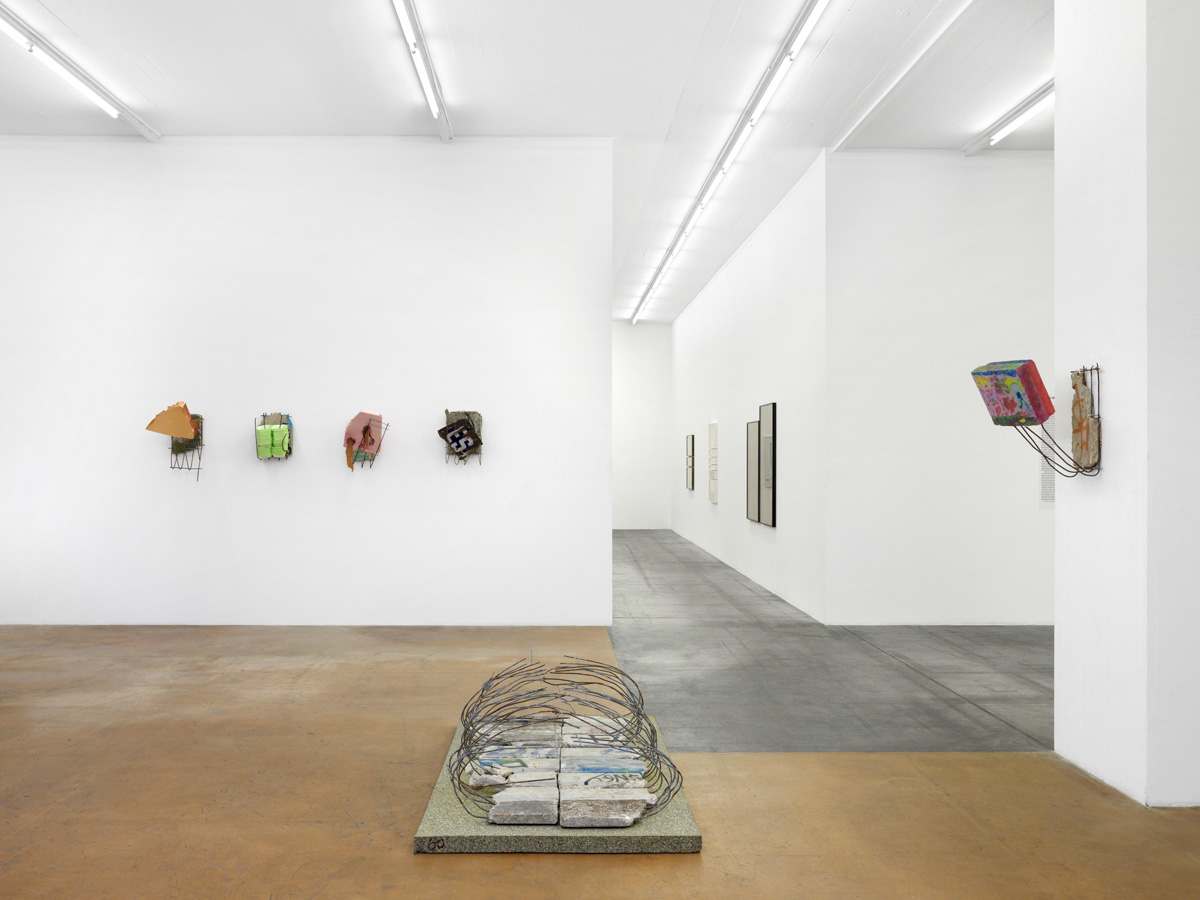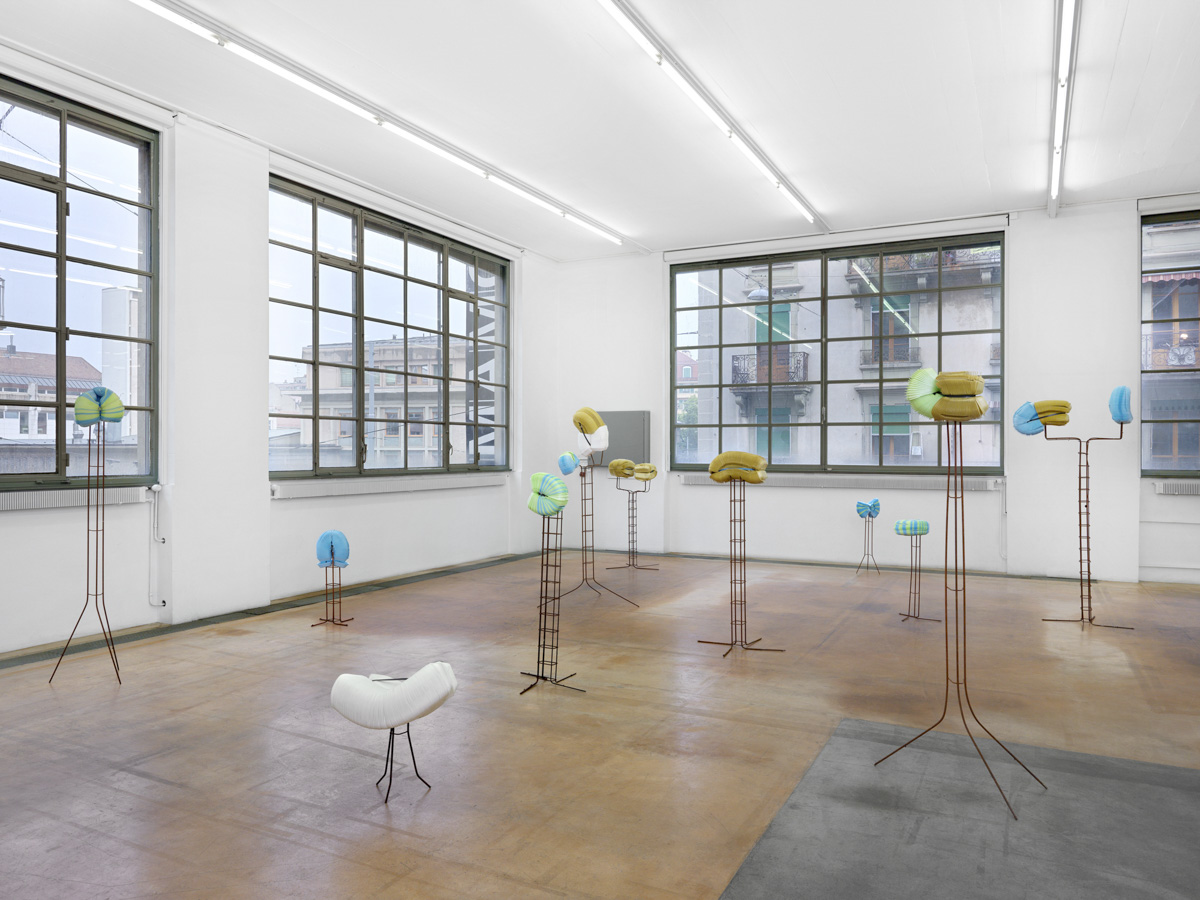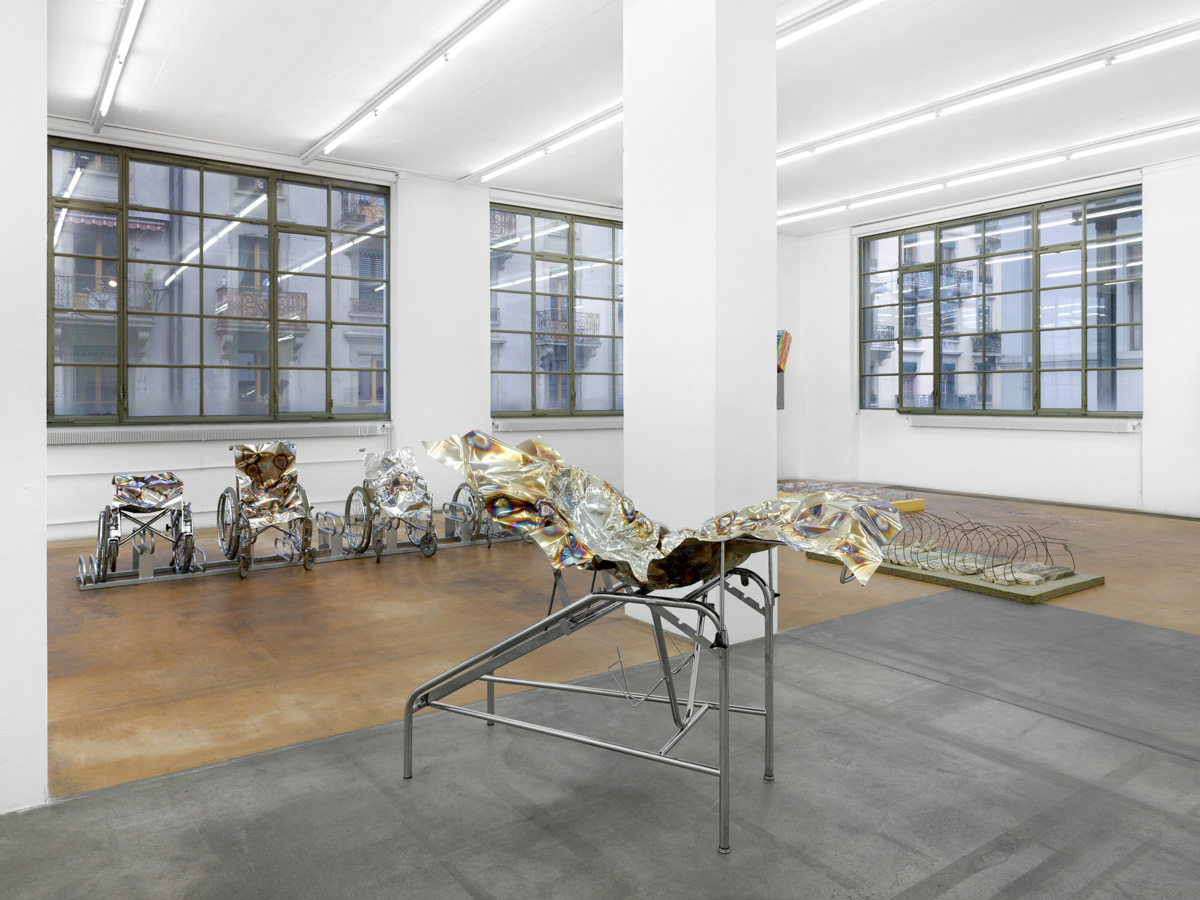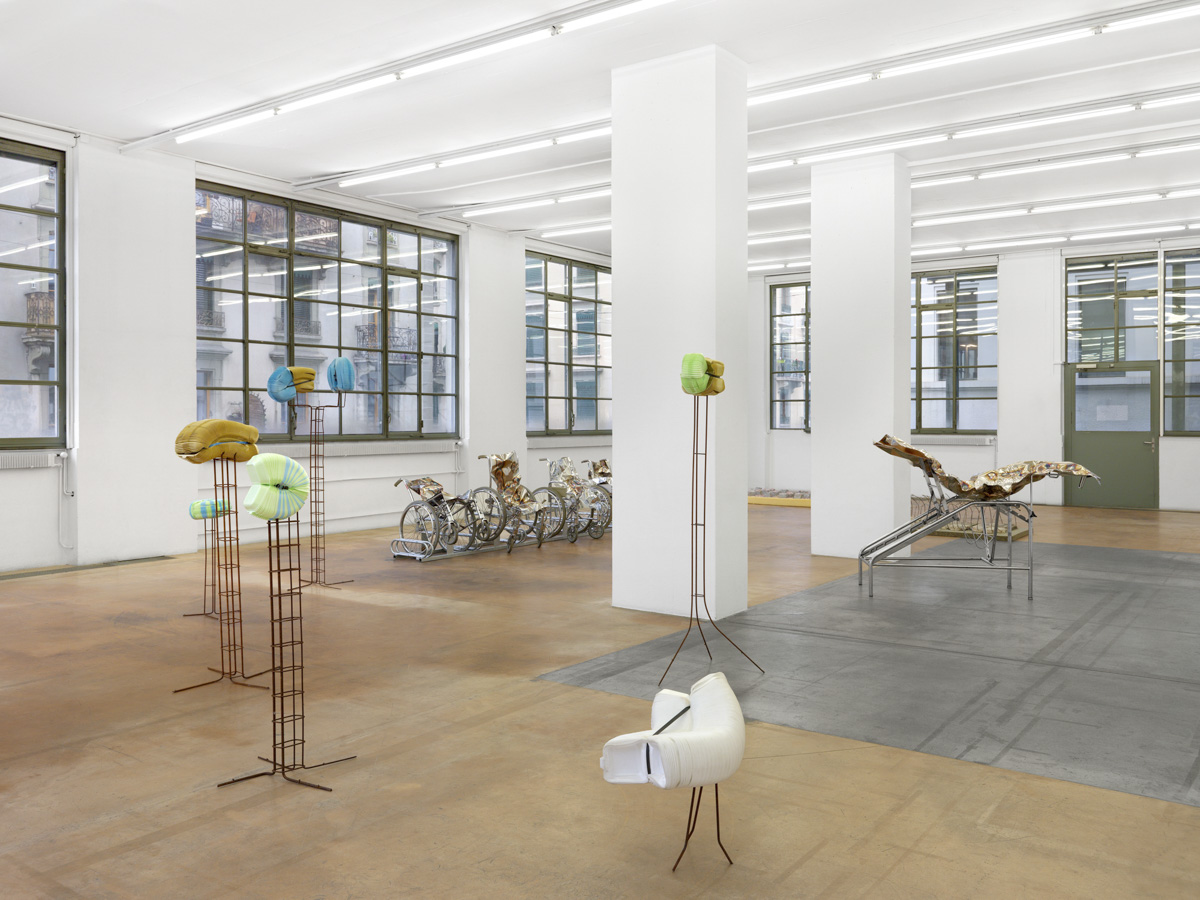Two old mattresses upon which rest some twenty or so roughly cut cobblestones, the entire thing sprinkled with confetti. Three sorts of modest objects, all collected beforehand, and all “untransformed,” or barely. Three materials that have nothing in common, other than the fact that they are abundant and cheap. Three trivial, even banal, gestures combining them into a whole. Three times nothing, hardly anything at all; the piece is not even polite enough to offer a title that we can use to set the interpretative machine in motion.
This mute work by Anita Molinero (*1953, Floirac, France) renders manifest some essential principles of her art. It quickly becomes clear that the mattress, cobblestones, and confetti admirably condense a certain idea of the street (glimpsed level with the bitumen), and of the ghosts of bodies that make it their own: the homeless, the revolted, the revelers. So many figures of what, in a public space, exceed the public order. The piece symbolically crystalizes something akin to the aftermath of a big night, a riot, or a demonstration, the streets strewn with the remains of banners and signs. On the plane of art, it must be noted that the work, which barely rises to twenty centimeters, has the audacity to declare itself a sculpture.
A well-known witticism, which some attribute to Barnett Newman and others to Ad Reinhardt, says: “Sculpture is what you bump into when you back up to see a painting.” Molinero has always claimed, indeed sought, the aggressiveness specific to the sculptural medium. We see this violence in the materials—impure and devoid of quality—that her oeuvre is made of: omnipresent in modern life, the materials she uses had for years remained invisible in art. In turning to them, Molinero is not trying to transfigure the miserable or to add yet another episode to the bad series about the eternal reconciliation of art and life. The point, rather, is to explore an aesthetic blind spot and to extract from it the rawest, but also the most familiar, scraps of the real. Indeed, the strength of her assemblagist sculpture is that it establishes itself in a no man’s land between figurative fiction and readymade. If we are to understand it correctly, we need to hear the artist marvel at Degas’ Petite danseuse de quatorze ans, at the whiff of perversion it gives off, at the vulgar rag that represents the skirt in the bronze statue.
And so, regardless of whether we place it on a symbolic or a material level—a decision that depends on whether we focus on the assembled objects or on what they are made of—the “mattress sculpture” (for it must be named somehow) embodies the provocation, the arrogance, characteristic of Molinero’s oeuvre—a lost body of work that is here reinterpreted. It serves as the starting point for the exhibition, which features close to a dozen sculptures created over the past decade. Each in its own way conjures up a different physical state. Mattresses are displayed alongside a delivery table, wheelchairs and assemblages that appear to be walkers. Seated, standing, reclining—the status of bodies and sculptures is reduced to commands reminiscent of dog training. Here one can discern a wry commentary on our idea of physical norms, which the physically challenged referenced here—those with disabilities, pregnant women, the homeless—cannot hope to attain.
- Exhibition organized by Paul Bernard



